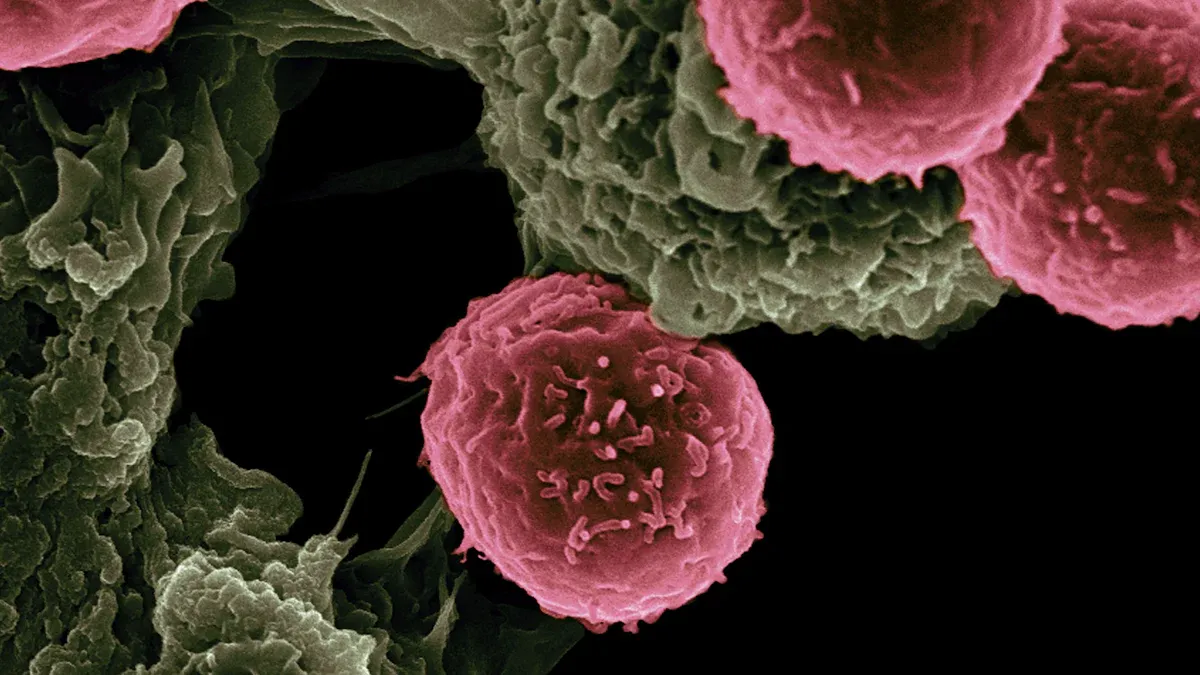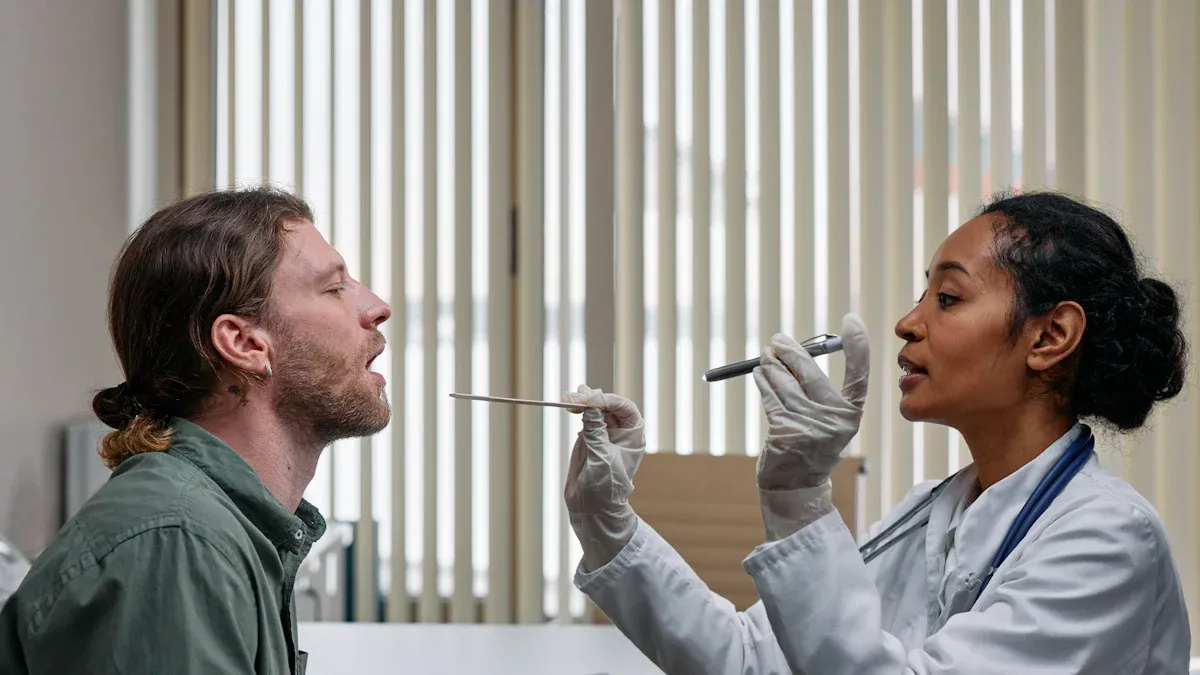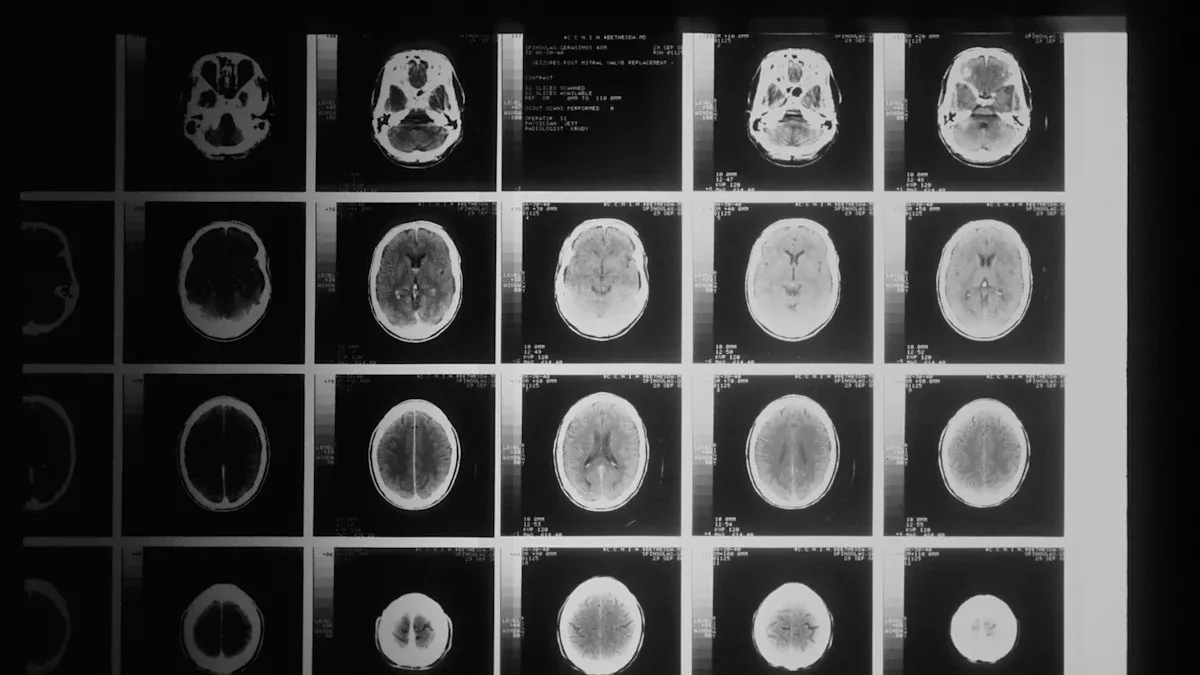Are All Lumps Cancerous or Harmless?

Finding a lump can be unsettling, but it’s important to remember that a lump always means cancer? Not necessarily. In fact, 80% of breast lumps that are biopsied turn out to be benign. That said, it’s crucial not to ignore any new or unusual lump. Early medical evaluation is key to determining its nature. Healthcare professionals stress that timely diagnosis significantly improves outcomes, particularly for malignant conditions. Whether the lump is benign or requires treatment, early detection enables doctors to develop an effective management plan. So, does a lump always mean cancer? Seeking prompt medical advice is the best way to find out.
Key Takeaways
Not all lumps mean cancer; 80% of breast lumps are harmless. Checking them early helps find out what they are.
Harmless lumps include cysts, lipomas, and fibroadenomas. These are often soft, easy to move, and don’t hurt.
Hard lumps that don’t move and grow fast might be cancer. See a doctor if you notice these signs.
Skin changes over a lump, lasting pain, or fast growth are warnings. Talk to a doctor to get it checked.
Checking your body regularly helps you notice changes early. Always ask a doctor if something feels wrong.
Common Causes of Lumps

Lumps can develop for many reasons, and understanding their causes helps you identify whether they might be harmless or require medical attention. Below are some common causes categorized into benign, malignant, and other origins.
Benign Causes
Cysts
Cysts are fluid-filled sacs that often form under the skin. These lumps are usually painless, slow-growing, and noncancerous. They commonly occur in individuals aged 35-50. Doctors diagnose cysts through physical exams or imaging tests like ultrasounds. Treatment may involve draining the fluid using a fine-needle aspiration procedure.
Lipomas
Lipomas are soft, fatty lumps that grow just beneath the skin. They feel rubbery and move easily when touched. These lumps are harmless and rarely cause discomfort. Lipomas typically don’t require treatment unless they grow large or press on nearby structures.
Fibroadenomas
Fibroadenomas are solid, smooth, and firm lumps often found in younger women, particularly in their 20s and 30s. These lumps feel rubbery and are noncancerous. While they don’t always need removal, doctors may recommend surgery if the lump grows or causes discomfort.
Type of Lump | Characteristics | Diagnosis and Treatment |
|---|---|---|
Cyst | Fluid-filled sac, common in ages 35-50, can be soft or hard, rarely cancerous. | Diagnosed via physical exam, mammogram, or ultrasound; treated by fine-needle aspiration. |
Fibroadenoma | Solid, smooth, firm, noncancerous, common in 20s and 30s, rubbery feel. | Diagnosed by physical exam, mammogram, or ultrasound; may require removal if it grows larger. |
Lipoma | Soft, fatty, movable lump under the skin. | Rarely requires treatment unless it grows or causes discomfort. |
Malignant Causes
Cancerous Tumors
Cancerous lumps often feel hard and immovable. They may grow rapidly and cause changes in the surrounding skin. For example, breast cancer accounts for 16% of new cancer cases in 2024, making it one of the most common malignant causes of lumps.

Lymphomas
Lymphomas are cancers of the lymphatic system. These lumps may appear in the neck, armpits, or groin. Symptoms include fever, night sweats, and weight loss. Doctors diagnose lymphomas through a biopsy of the affected lymph node.
Other Causes
Infections or Abscesses
Infections can cause swollen lymph nodes or abscesses, which are pus-filled lumps. These lumps may feel tender and warm to the touch. Treating the underlying infection often resolves the lump.
Hormonal Changes
Hormonal fluctuations, especially during menstruation or pregnancy, can lead to temporary lumps in breast tissue. These lumps usually disappear once hormone levels stabilize.
Tip: If you notice a lump that persists or changes over time, consult a healthcare provider for evaluation.
A Lump Always Means Cancer? Understanding the Differences
When you discover a lump, it’s natural to wonder, "A lump always means cancer?" The truth is, not all lumps are harmful. Understanding their characteristics can help you differentiate between harmless and concerning ones.
Characteristics of Harmless Lumps
Soft and Movable
Harmless lumps often feel soft and can move under the skin when you touch them. These features suggest that the lump is likely benign.
The texture of the lump indicates softness.
Its ability to shift under the skin points to a noncancerous nature.
Common examples include lipomas and cysts, which are typically soft and movable.
Painful to the Touch
Painful lumps are often caused by infections or injuries. For example, an abscess or swollen lymph node may feel tender and warm. These lumps usually resolve once the underlying issue is treated. Pain is less common in cancerous lumps, making this an important distinction.
Stable in Size
Benign lumps tend to remain the same size over time. They don’t grow rapidly or change in shape. If you notice a lump that hasn’t changed for weeks or months, it’s less likely to be cancerous. However, you should still monitor it and consult a doctor if you’re unsure.
Characteristics of Concerning Lumps
Hard and Immovable
Hard lumps that don’t move when pressed can be a red flag. These lumps may be attached to underlying tissues, which is often a sign of a serious condition like cancer.
Hardness and immobility are key indicators of concern.
Unlike benign lumps, these may feel fixed and rigid under the skin.
Rapid Growth
A lump that grows quickly should never be ignored. Rapid growth is one of the most significant warning signs of malignancy. If you notice this, seek medical attention immediately.
Persistent Pain or Discomfort
While most cancerous lumps are painless, some may cause persistent discomfort. This could result from the lump pressing on nearby nerves or tissues. If the pain doesn’t go away, it’s essential to get it checked.
Note: If you’re asking yourself, "A lump always means cancer?" remember that many lumps are harmless. However, any lump with concerning characteristics should be evaluated by a healthcare professional.
When to Seek Medical Attention
Red Flags to Watch For
Sudden or Rapid Growth
If you notice a lump growing quickly, it’s time to consult a doctor. Rapid growth often signals a more serious condition. Pay attention to any sudden increase in size, as this could indicate an underlying issue that requires immediate evaluation.
Changes in Skin Over the Lump
Changes in the skin over a lump can be a warning sign. Look for redness, darkening, or dimpling. These changes may suggest a more serious condition, such as cancer. Alterations in texture, like hardening or irregularity, also warrant medical attention. If the skin appears puckered or tender, don’t delay seeking help.
Persistent Pain or Discomfort
Pain that doesn’t go away is another red flag. While many harmless lumps are painless, persistent discomfort could mean the lump is pressing on nearby tissues or nerves. If the pain worsens or doesn’t improve, schedule a medical evaluation.
Tip: Monitor lumps for changes in size, appearance, or accompanying symptoms like pain. Early action can make a significant difference.
Importance of Early Diagnosis
Why Early Detection Matters
Early diagnosis improves treatment outcomes. Identifying a lump’s nature early allows doctors to address potential issues before they worsen. For example, catching cancerous lumps in their initial stages often leads to more effective treatment and higher survival rates.
Diagnostic Tools Doctors May Use
Doctors use various tools to evaluate lumps. Imaging tests like ultrasounds or MRIs help determine the lump’s size, shape, and composition. A biopsy, where a small tissue sample is taken, provides a definitive diagnosis. These tools ensure you receive accurate information about your lump.
Remember: A lump always means cancer? Not necessarily. However, early evaluation is crucial to rule out serious conditions and provide peace of mind.
What to Expect During a Medical Evaluation

Initial Examination
Questions Your Doctor May Ask
During your visit, your doctor will ask specific questions to understand the lump better. They may inquire about:
When you first noticed the lump.
Whether the lump has changed in size, shape, or texture.
Any associated symptoms, such as pain, redness, or fever.
Your personal and family medical history, especially regarding cancer or other conditions.
Providing accurate and detailed answers helps your doctor assess the lump more effectively.
Physical Examination of the Lump
Your doctor will perform a physical examination to evaluate the lump’s characteristics. They will check if the lump is soft or hard, movable or fixed, and whether it causes pain when touched. This hands-on assessment helps determine if further diagnostic tests are necessary.
Diagnostic Tests
Imaging Tests (e.g., Ultrasound, MRI)
Imaging tests play a crucial role in evaluating lumps. These tests provide detailed images of the lump’s structure and composition. Commonly recommended imaging studies include:
Imaging Study | Recommendation |
|---|---|
Recommended when a worrisome mass is found. | |
MRI with Contrast | Recommended following initial radiography, pending radiology recommendation. |
These imaging tools help doctors identify whether the lump is solid, fluid-filled, or potentially cancerous.
Biopsy Procedures
If imaging tests suggest the lump might be suspicious, your doctor may recommend a biopsy. This procedure involves removing a small tissue sample from the lump. A pathologist examines the sample under a microscope to check for cancer cells. Biopsies provide definitive answers about the lump’s nature and guide the next steps in treatment.
Tip: Don’t hesitate to ask your doctor about the purpose of each test. Understanding the process can ease your concerns and help you stay informed.
Not all lumps are cancerous, but recognizing their characteristics is essential. Many lumps are benign, yet the likelihood of malignancy increases with age. Early detection through regular health screenings can save lives. Pay attention to changes in a lump’s size or appearance. Rapid growth or unusual features often signal the need for medical evaluation. If you’re wondering, "A lump always means cancer?" remember that most lumps are harmless. However, consulting a healthcare professional promptly ensures peace of mind and timely care.
Tip: Regular check-ups and awareness of your body can help you stay ahead of potential health concerns.
FAQ
What should you do if you find a lump?
You should monitor the lump for changes in size, shape, or texture. If it grows, becomes painful, or shows skin changes, consult a doctor immediately. Early evaluation ensures proper diagnosis and treatment.
Can a lump go away on its own?
Yes, some lumps, like those caused by hormonal changes or minor infections, may disappear without treatment. However, you should still monitor the lump and seek medical advice if it persists or worsens.
Are painful lumps always harmless?
Not always. While many painful lumps result from infections or injuries, some may indicate serious conditions. Persistent pain or discomfort should prompt you to seek medical evaluation to rule out underlying issues.
How can you tell if a lump is cancerous?
Cancerous lumps often feel hard, immovable, and grow rapidly. They may cause skin changes or persistent discomfort. However, only a doctor can confirm if a lump is cancerous through diagnostic tests like imaging or a biopsy.
Is it normal to feel lumps in your body?
Yes, it’s normal to feel lumps like cysts or lipomas under your skin. These are usually harmless. However, any new or unusual lump should be evaluated by a healthcare professional to ensure it’s not a sign of a serious condition.
Tip: Regular self-examinations can help you detect changes in your body early. If you notice anything unusual, don’t hesitate to consult a doctor.
See Also
Identifying Symptoms of Invasive Lobular Carcinoma Explained
Exploring Symptoms and Causes of Laryngeal Cancer
Recognizing Symptoms of Liposarcoma: A Brief Overview
An In-Depth Look at Various Types of Cancer
Insights into Malignant Fibrous Histiocytoma and Osteosarcoma
